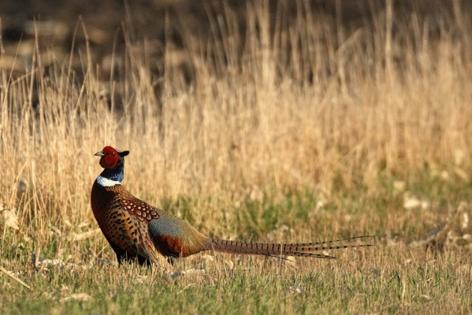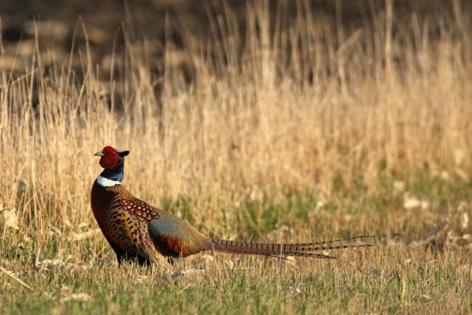Number of Minnesota pheasants jumps 50% from 2024, according to August roadside survey
Published in Outdoors
MINNEAPOLIS — The number of Minnesota pheasants counted in a recently completed August roadside survey jumped nearly 50% from the tally recorded last year, coming in 21% above the 10-year average, according to the Department of Natural Resources.
Steven Woodley, acting DNR upland game research scientist, said all regions of the pheasant range experienced higher bird numbers, with the largest increase of 189% recorded in southeastern Minnesota.
“The increase in pheasant numbers across the state and all regions is great news,” Woodley said, in a news release announcing the survey results. “Our milder winter likely helped the overwinter survival of hens, and the drier and warmer spring created better conditions for nesting and brood-rearing relative to last year.”
In addition to the increase in southeastern Minnesota, pheasant numbers rose in the southwest (86%), east central (82%), south central (40%), central (33%) and west central (19%) parts of the state.
The statewide index this year of 75 birds per 100 miles of roads easily topped the 51 counted in 2024.
Four chicks were counted per brood in this year’s survey, the same as in 2024. But 81 broods were counted per 100 hens this August, compared to 77 last year.
Increases in southwestern Minnesota were expected, because that area escaped some of the heavy rains that drenched other parts of southern Minnesota in June.
But the higher numbers elsewhere in the pheasant range are a surprise. They indicate that many hens took advantage of the dry early spring and hatched broods in May, producing chicks that were big enough to survive the summer downpours.
Pheasant hunting begins in Minnesota at 9 a.m. on Saturday, Oct. 11.
In Iowa, the pheasant population is at a 20-year high, according to roadside survey results reported by the state’s Department of Natural Resources.
Pheasant numbers are up 43% statewide in Iowa, compared to 2024. A mild winter that produced the fourth-lowest amount of snow in 138 years helped produce the increase.
Iowa upland wildlife research biologist Todd Bogenschutz predicted as many as 700,000 rooster pheasants might be harvested by hunters this fall.
____
©2025 The Minnesota Star Tribune. Visit at startribune.com. Distributed by Tribune Content Agency, LLC.










Comments